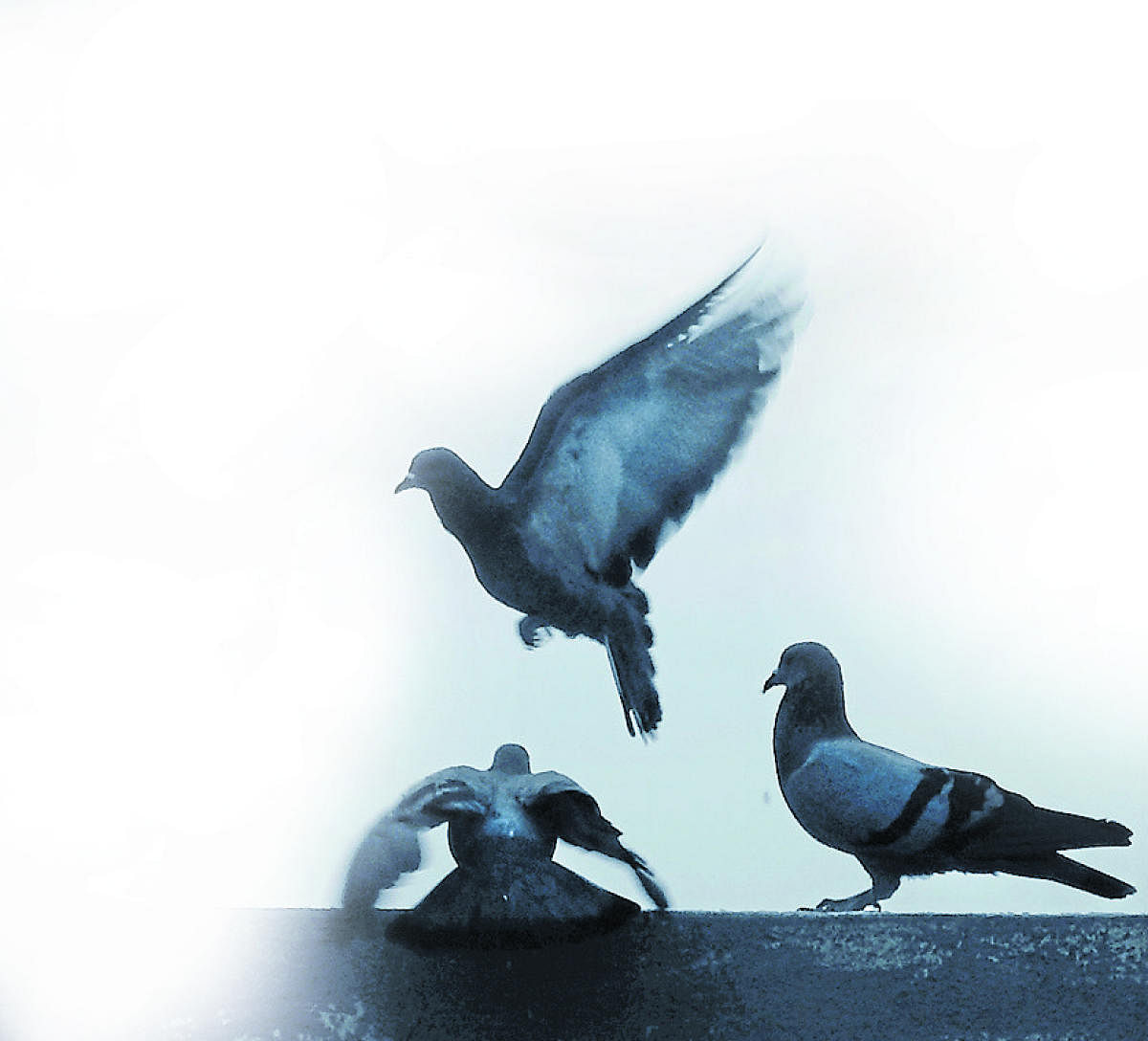
In his book Pigeons: The Fascinating Saga of the World’s Most Revered and Reviled Bird, award-winning American journalist Andrew D Blechman writes how the lives of man and pigeon (also called dove) are inexorably intertwined. “From a farmer’s fertile fields to an urbanite’s concrete cities, the pigeon is our constant and inescapable companion. Wherever humans go, they’re likely to find a flock of pigeons loafing nearby… Now they populate nearly every city in the Western Hemisphere, from the arid deserts of Arizona to the frigid climes of Alaska. The pigeon does not migrate but rather adapts to its chosen location year-round.”
Blechman observes that in many ways, pigeons exhibited the tender traits we most admire in ourselves and that throughout history, ‘the bird has been treasured as a source of companionship (and protein), admired and utilised for its unique navigational and athletic abilities, and even worshipped as a timeless symbol of God’s grace.” According to him, fossil evidence suggested that the pigeon originated in southern Asia and made its way across northern Africa and Europe.
Like everyone else, this writer too is not unfamiliar to the avatars and antics of pigeon flocks, but it is the current lockdown which has brought him closer to these feathered beings. Thanks to the forced confinement, the terrace of our apartment block is ideal for a walk, stretch or just to enjoy the open sky. The most enjoyable moments are, of course, in the early morning when the air is fresh and the sun rises slowly on the horizon, a perfect antidote to shed the sluggishness of overnight snooze.
In the early days of lockdown, a couple of doves perched on the parapet wall would observe me suspiciously as I stretched my limbs facing the rising sun. They would fly away at the slightest noise or jerky action on my part. They soon got accustomed to my presence as I did to theirs. One morning, out of a whim, I placed a handful of grains on the wall. The response from the birds was tepid. In the afternoon when I came for a bit of Vitamin D sunbath, the grains had disappeared. No guesses who had finished them off.
I made it a habit to bring grains every morning and scatter them around. The birds came and set about nibbling at them as long as I did not disturb them. Days passed and two things are clear. One, the birds are there every morning unfailingly. Two, the population has increased — from two to twenty, and counting!
About a month ago, as the birds devoured their whole-grain breakfast, I began shooting them — with my camera, of course. To my surprise, they did not seem to mind as long as they got their meal. Bit by bit I was able to get quite close to them and click. When I processed the images on my computer, the results looked pretty exciting. The camera had captured the many moods and movements of the birds which the naked eye had not fully and clearly perceived. On a closer look, I could observe many human traits in their conduct and actions. I could sight leaders and laggards, givers and takers, movers and shakers in that bunch of frolicking birds. Some of them clearly seemed to have a penchant for drama, the best ones among them showing the grace, control and agility of expert ballerinas.
I have now become an ardent fan and passionate follower of the dancing doves mesmerised by their fairy-like footwork and elegance in flight. The way some of them unwrap the wings is particularly enchanting and looks magical to me. I have also realised that feeding them and photographing their decisive moments is a nice way to begin the day. It helps to swing myself from sluggish restlessness and gain some comfort and hope in times of Covid-19.
Lockdown or not, my dalliance with the dancing doves is unlikely to change anytime soon.